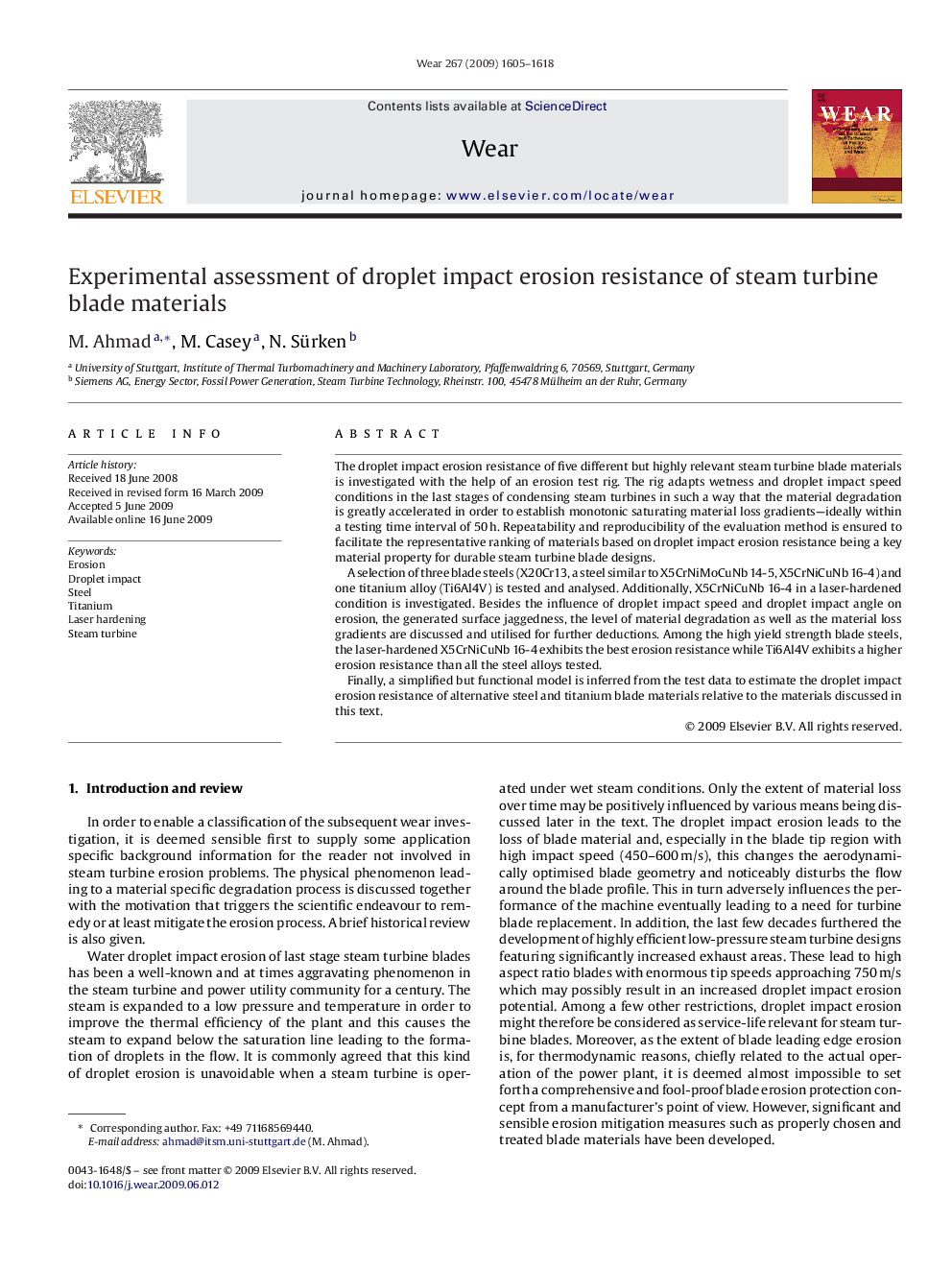| Article ID | Journal | Published Year | Pages | File Type |
|---|---|---|---|---|
| 618549 | Wear | 2009 | 14 Pages |
The droplet impact erosion resistance of five different but highly relevant steam turbine blade materials is investigated with the help of an erosion test rig. The rig adapts wetness and droplet impact speed conditions in the last stages of condensing steam turbines in such a way that the material degradation is greatly accelerated in order to establish monotonic saturating material loss gradients—ideally within a testing time interval of 50 h. Repeatability and reproducibility of the evaluation method is ensured to facilitate the representative ranking of materials based on droplet impact erosion resistance being a key material property for durable steam turbine blade designs.A selection of three blade steels (X20Cr13, a steel similar to X5CrNiMoCuNb 14-5, X5CrNiCuNb 16-4) and one titanium alloy (Ti6Al4V) is tested and analysed. Additionally, X5CrNiCuNb 16-4 in a laser-hardened condition is investigated. Besides the influence of droplet impact speed and droplet impact angle on erosion, the generated surface jaggedness, the level of material degradation as well as the material loss gradients are discussed and utilised for further deductions. Among the high yield strength blade steels, the laser-hardened X5CrNiCuNb 16-4 exhibits the best erosion resistance while Ti6Al4V exhibits a higher erosion resistance than all the steel alloys tested.Finally, a simplified but functional model is inferred from the test data to estimate the droplet impact erosion resistance of alternative steel and titanium blade materials relative to the materials discussed in this text.
